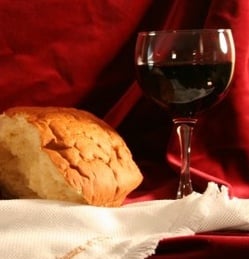 The Eucharist, though many today have never experienced it in such a manner, was part of a meal and not an isolated sacred set of rites.
The Eucharist, though many today have never experienced it in such a manner, was part of a meal and not an isolated sacred set of rites.
The meal-shaped Eucharist begins with Jesus: his routine evening meals with his disciples gave rise to the “last” supper. And that last supper was the last one until he would eat again with his followers in the kingdom. Meals then were at the heart of the Lord’s Supper.
Both Acts 2:46 and 20:11 as well as 1 Corinthians 11:20 reveal that meals were the context of the Lord’s supper.
They did not eat morsels and sip out of little cups, but the bread of the Passover week meals and the wine of an ordinary meal were suddenly transformed by Jesus into symbols of his singular saving acts. (I’m not talking here either transsubstantiation or consubstantiation.)
The Lord’s Supper then is to be seen as ordinary elements of a meal that were used by Jesus to offer to his disciples the redemption that he alone could bring. The context is a meal, an event where friends ate with one another.
I base this first in a series on John Mark Hicks, Come to the Table: Revisioning the Lord’s Supper
.
.

